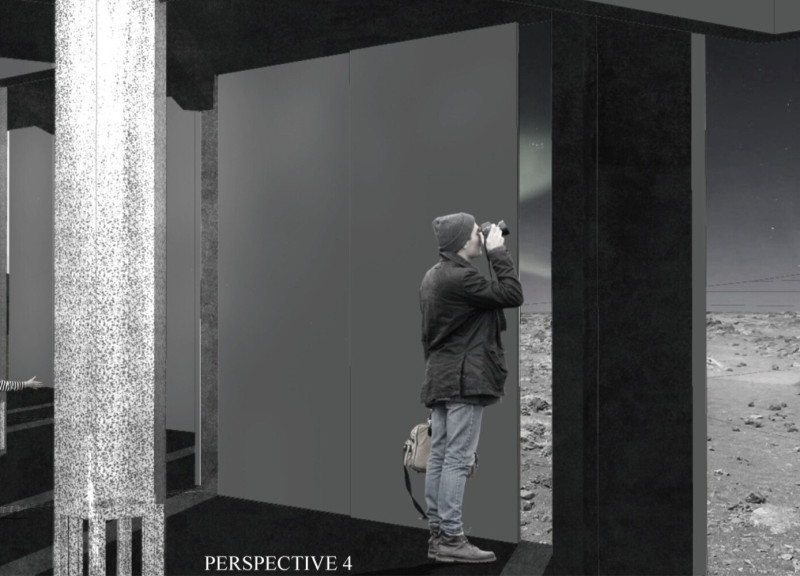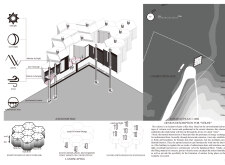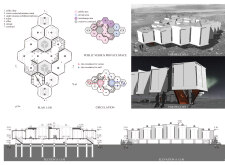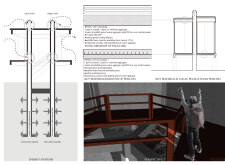5 key facts about this project
The coffee shop encompasses a combination of public and private areas that accommodate various activities, such as social gatherings and everyday operations. The design integrates natural light through strategically placed skylights and uses energy-efficient practices rooted in the Icelandic landscape. The choice of materials reflects both local availability and the demand for sustainable performance, ensuring compatibility with the surrounding environment.
Material and Structural Innovation
One of the standout features of "Straw" is its material composition, which includes concrete, peleth, translucent concrete, polycarbonate, and perlite. Each material serves a specific purpose while contributing to the overall sustainability of the project. The use of volcanic aggregate not only aids in reducing the carbon footprint but also enhances thermal insulation and structural resilience. This focus on local materials underscores the project’s commitment to sustainability and ecological sensitivity.
The design incorporates advanced geothermal systems that optimize indoor climate control by utilizing the earth's natural heat. This represents a unique approach in architectural design, utilizing passive heating and cooling mechanisms to minimize energy consumption. Additionally, the building’s hexagonal modules encourage efficient space utilization and facilitate natural ventilation, which enhances occupant comfort.
Community-Centric Design Approach
"Straw" emphasizes community engagement through its layout and space planning. The interconnected public areas are designed to encourage interaction among visitors, fostering a sense of belonging and community spirit. This is further reinforced through transitional spaces that serve not just as physical connectors but as social hubs. This unique approach sets "Straw" apart from typical coffee shop designs, focusing not merely on the commercial aspect but also on social sustainability.
Moreover, the careful integration of the architecture with the surrounding landscape allows for a seamless flow between the built environment and nature. Landscaping elements are designed to support local biodiversity while enhancing the overall aesthetic of the project.
For a comprehensive understanding of the architectural strategies employed in "Straw," it is recommended to explore the architectural plans, architectural sections, architectural designs, and architectural ideas presented. Delving into these elements will provide deeper insights into the project's innovative approaches and its contributions to sustainable architecture in unique geographical contexts.


























